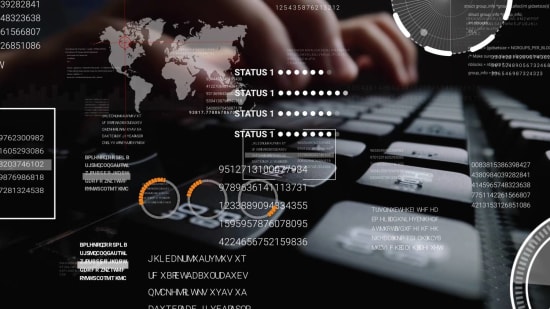
What is HIDS in Cybersecurity?
A HIDS (Host Intrusion Detection System) is software that detects malicious behavior on the host. It monitors all the operating system operations, tracks user behavior, and operates independently without human assistance.
How does a Host-based Intrusion Detection System work?
HIDS operates at the OS level, unlike others antivirus systems that operate at the application level. It monitors the behavior of programs running on the computer’s operating system to detect any unauthorized or suspicious activity. This type of protection is typically installed on servers with sensitive information such as databases and financial records. This system consists of two parts: the agent and the monitor.
The agent resides in the monitored computer, and it gathers information from the system’s hardware, directories, files, processes running, network traffic, and many more. This data is then sent to a central location where it’s analyzed by a monitoring program that looks for suspicious activities like:
- Unauthorized access to the system.
- Hacking into the computer remotely.
- Trying to change critical system settings.
- Changes to files or programs, etc.
When an intrusion is detected, the software monitors check what’s going on, and sends alerts to administrators who can then take measures. In addition, it monitors the system’s network connections to ensure that no one is trying to use it as a point of access into the network.
Examples of HIDS tools
1) UTMStack

UTMStack HIDS agent can be installed on a Microsoft Windows, Linux, and Mac system. This Next-Gen SIEM and compliance platform is built to protect small and medium-sized businesses against threats such as SQLI, XSSI, CSRF, and more.
Free SIEM solution (community edition only) is an additional layer of security that includes Host-based and Network-based Intrusion Detection Systems (HIPS and NIPS) with prevention capabilities. These capabilities are not enabled by default, but the customer can easily do it. It provides a web-based interface for data collection and management of intrusion events by monitoring endpoints and web applications. UTMStack can be used for many types of security purposes, such as monitoring traffic patterns, detecting abnormal activity on servers or networks, or scanning files uploaded for malware infections.
2) AlienVault

HIDS AlienVault is a SaaS, or Software as a Service, protecting large, small, and medium-sized companies from cyberattacks. It provides companies with real-time detection of intrusions and prevents attacks by detecting vulnerabilities before they happen. HIDS AlienVault automates tasks like generating reports and alerting when there is suspicious activity on the network. It has an API that allows developers to integrate it with other applications. This agent also can be installed on a Windows, Linux, and Mac system.
3) Security Onion

Security Onion is a free Linux distro designed for intrusion detection, network security monitoring, and log management. It has over 50 tools that are pre-installed for the user. Security Onion is used by large organizations and small to medium-size businesses. It is an excellent tool for beginners and experts in security because of its friendly graphical interface. It also features many dashboards that give you a quick overview of your network’s status.
4) Tripwire

Tripwire is open-source software that can be used as a HIDS agent on Linux. It works by comparing file timestamps and creating hashes of files. If any changes occur, it notifies the user. It’s lightweight and does not take up much memory space, nor does it have much of an impact on system performance. The most common use for Tripwire is in network security, configuration management, and compliance auditing. It provides not only detection but also prevention. A primary function of Tripwire is to detect modifications to the system or network, thus preventing intruders from gaining access to any information. This action is accomplished by comparing a single file or folder against a known good backup. Tripwire often operates in a client-server architecture where it compares the central repository with changes made to all clients on the network.
5) SysWatch

SysWatch has taken inspiration from Tripwire to develop its software. It’s a Linux-based, open-source, host-based intrusion detection system that can function as a HIDS when configured to do so. It is a free software package that can be used to monitor the activity of various services on either a local host or remote server and detect any signs of unauthorized access or prohibited changes to files, directories, and running processes.
Why do the companies need to install a Host-based Intrusion Detection System?
The reasons why companies need to install a HIDS are:
- Prevention from hacker attacks.
- Monitoring user activity.
- Recording data.
- Detecting unusual behavior.
What is the difference between NIDS and HIDS?
NIDS analyzes the network traffic for suspicious behavior, detecting a hacker before he’s able to make an unauthorized intrusion. HIDS detect suspicious activity when the hacker has already breached the system.
What is the difference between HIDS, HIPS, and NIPS?
1) Host-based intrusion detection system (HIDS) will only detect intrusions; it will notify when an intrusion has been detected, but it doesn’t try to stop them or block them from happening.
2) Host-based intrusion prevention system (HIPS) is similar to a NIDS, but the main goal is detection and threat prevention. For example, a HIPS deployment may detect the host being port-scanned and block all traffic from the host issuing the scan.
3) Network-based intrusion prevention system(NIPS) is a HIDS that monitors traffic on the network to identify malicious activity and take measures to stop them before they happen.
What are the specific functions of HIDS?
1) Logging: A HIDS logs all activities that occur on the protected network and capture information such as user identities, data access time, and type of event that occurred
2) Alerting: The HIDS can produce alerts when it detects an intrusion attempt or if one has been successful. This way, the system administrators are aware of any potential threats to the network.
3) Analysis: The HIDS analyzes log files looking for patterns in behavior to identify intruders. This function allows the system administrators to launch countermeasures or alert law enforcement agencies if they detect malicious activity
How to install and set up a Host-based Intrusion Detection System?
Configuring HIDS in your system is essential to keep your computer secure. When you first configure HIDS, it will take a while to scan your home directory and any new files added to it. However, this is crucial for a healthy system because if you don’t have an up-to-date image of every file on your computer, the virus scanning tool can’t detect any new viruses or devices.
Each HIDS agent provides a specific installation and setup. All that you need to do is reach on Google the installation and set up that you want.



Thanks for sharing its very informative